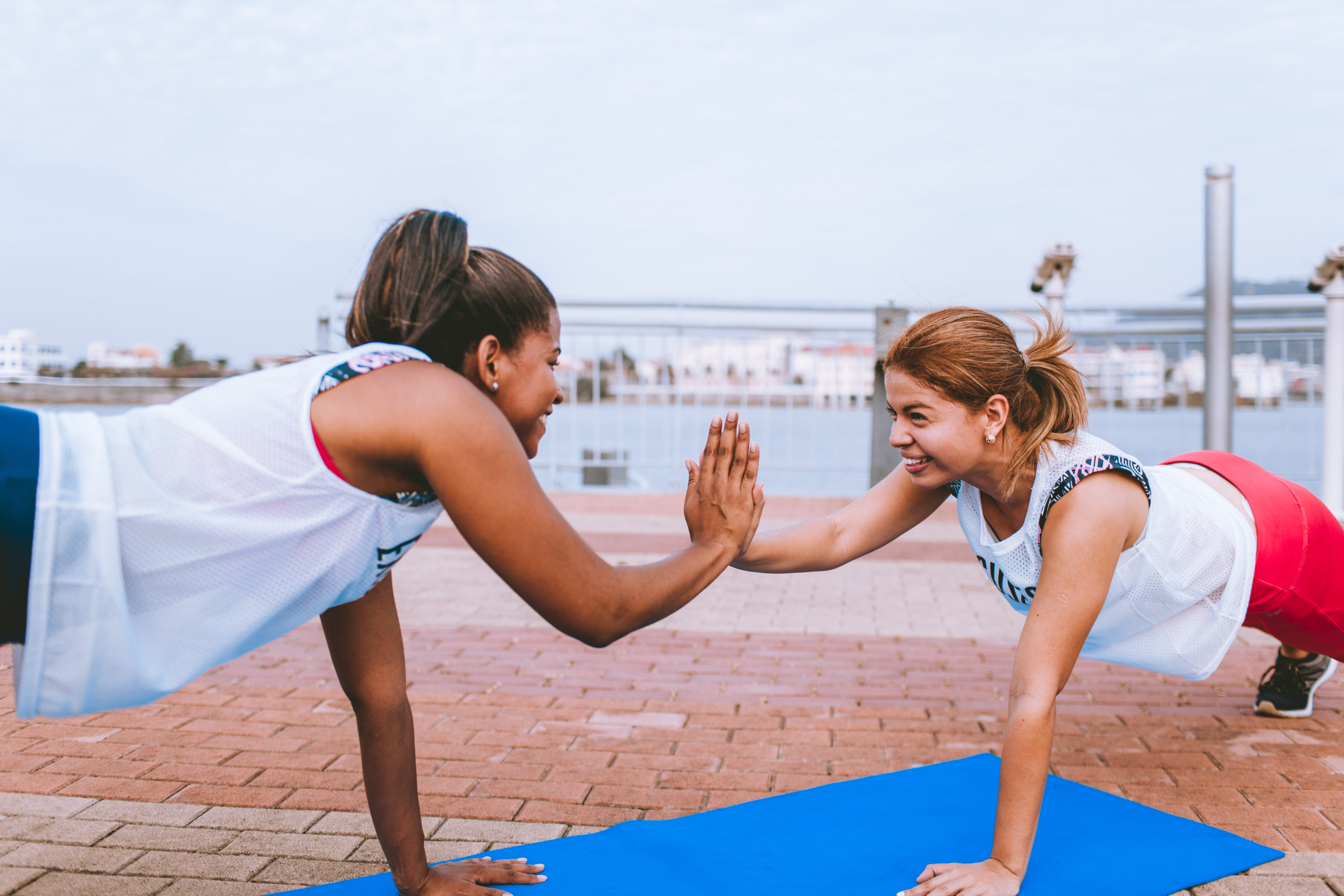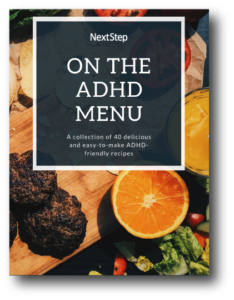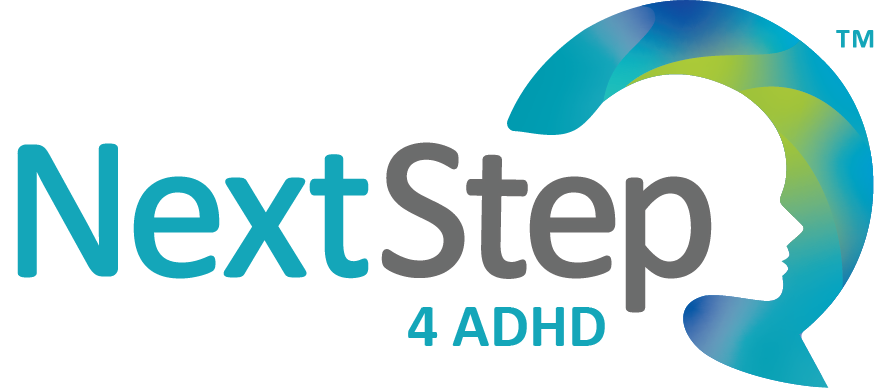
Cardio or Strength Training: Which Is Better Exercise for ADHD?
It’s a given: exercise is essential for a healthy body and a healthy mind. Exercise can lift your mood, help you sleep better at night, and reduce your chances of developing certain diseases — the benefits of exercise are endless. But did you know that exercise can (sometimes dramatically) reduce the troublesome symptoms of ADHD?
In fact, exercise is one of the three main pillars of self-care. Whether you’re into jogging or Peloton biking or hiking in the mountains, exercise is an important component of a holistic ADHD treatment plan. But when it comes to exercise and ADHD, which type of exercise is better?
Let’s dive in.
Aerobic Exercise for ADHD
First, what is aerobic exercise? Aerobic exercise — which means exercise “with oxygen” — is cardiovascular conditioning. You probably call this type of exercise “cardio,” and it can include activities like dancing, walking, swimming, jogging, or biking. One of the key differences here is that your breathing and heart rate will increase during these activities.
Is cardio good for managing ADHD symptoms?
Dr. John Ratey, a neuropsychiatrist from Harvard Medical School, says YES!
In an article published by the Attention Deficit Disorder Association, Dr. Ratey explains, “The best types of exercise encourage the development of connections between parts of the brain and in addition, stimulate the brain to release neurotransmitters (brain chemicals that improve the symptoms of ADHD).”
Finding the Right Cardio
The ideal activity to help manage the symptoms of ADHD:
- Is aerobic
- Requires you to remain alert
- Requires you to make quick changes (such as tracking the racquetball and pivoting quickly to return the ball)
- Involves cooperation and interaction with others
- Is connected to a personal meaning for you
- Is fun
You may find that many activities fit these requirements. A few examples include dancing, Zumba classes, soccer, tennis and racquetball, running (especially with a running group), walking, HIIT and Tabata, and jump rope. Martial arts — including ju jit su, karate, and tae kwon do — are also a good aerobic exercise for individuals diagnosed with ADHD. These sports have been shown to increase focus during homework, enhance academic performance, and decrease misbehavior in children diagnosed with ADHD. [1]
Dance is another activity that hits the above-mentioned requirements. It’s aerobic, it’s fun, it requires quick changes, and if you involve your family, it can give you the opportunity to develop a personal meaning with the activity. And the best part? You don’t even need to leave your home. You can find a dance-themed workout easily on YouTube. Interested? Grab your gym shoes and get groovin’!
Why Is Cardio Good for People with ADHD?
During an aerobic activity, your body requires more oxygen, which means your heart is pumping more blood to the brain. And more blood = more oxygen. More oxygen means that your brain cells are better-nourished, which can supercharge focus, the ability to learn, memory, and even emotional regulation, for 2 to 3 hours afterwards.
Specifically, scientists have linked vigorous, high-intensity workouts with more active brain cells. What does this have to do with ADHD? When the brain cells become more active, there is a surge in the production of a protein called brain-derived neurotrophic factor (BDNF). What?!
If you’ve never heard of BDNF, that’s okay! But this is the takeaway:
- Exercise encourages your brain to produce a protein called BDNF.
- BDNF is “associated with cognitive improvement and the alleviation of depression and anxiety,” according to a 2016 study published in eLife.
And here’s the important part: cardio workouts give the biggest boost to BDNF production.
Cardio helps in other ways too. Dr. Gimpel, a board-certified psychiatrist and neurologist and head of the Brain Power Clinic in Jerusalem also shares in the importance of cardio:
“Exercise alone increases levels of dopamine, which could improve concentration for hours after completion. But combine that exercise with a deep mental focus and patients may see even more positive results. I have businessmen that do not hold meetings unless they’re between 9 and 11 in the morning,” says Dr. Gimpel. “They go to the fitness center in the morning and create those perfect two hours of concentration without medication.”
So, the score:
- Cardio: 1
- Strength training: 0
Strength Training Exercise for ADHD
What is strength training? Strength training refers to exercises that build your endurance and strength. It includes lifting weights, but you’re not limited to using weights. You can use your own bodyweight to perform strength training exercised. This includes sit-ups, push-ups, pull-ups, etc.
Is strength training good for people with ADHD? YES!
Strength training can also help reduce the symptoms of several mental health conditions, including depression, anxiety, and ADHD. How? Exercise-triggered endorphins — the “happy” hormones — get a lot of credit, but strength training does more. It also provides you with an opportunity to overcome obstacles (like reaching new rep goals or smashing your push-up record) in a controlled manner. Overcoming controlled obstacles has a direct (and positive) impact on your mental resiliency, according to research from Harvard Medical School.
You don’t need to become a bodybuilder though. For the greatest effects on mental well-being, a 2014 review published in the journal Frontiers in Psychology highlights that using low to moderate weights (i.e. lighter than 70 percent of what you can lift for one rep) has the greatest effects on your mental health.
So, the score:
- Cardio: 1
- Strength training: 1
It’s a TIE! Pam Valdes explains, “The bottom line is that there is no definitive answer. The majority of research tends to lean towards cardio being more beneficial to brain function, but then again, cardio is the mode that has been studied in most of the research, so the results may be skewed.”
Combining the Benefits of Cardio and Strength Training
For optimal physical and mental health, you can benefit from both cardio and strength training. According to the American Heart Association, you should aim for:
- 150 minutes of moderate activity per week
- 2 strength training sessions per week
Regardless of which type of exercise you choose, be sure to choose activities that are social, fun, and meaningful.
Which Type of Exercise Should YOU Do?
Certified Health Coach Pam Valdes weighs in:
The absolute best exercise for ADHD is the one you will actually do. It’s perfectly fine – maybe even helpful – if that changes from year to year, or even day to day.”
If you’re stuck — or you have a hard time logging your workouts — we can help. With our ADHD coaching program, we can help you learn the strategies you need to meet your self-care, exercise, and nutrition goals.
About Pam Valdes
 Pam Valdes is a certified Health Coach with a focus on ADHD coaching. She has a strong background in wellness and counseling. She has provided compassionate coaching to adults and teens for over 10 years.
Pam Valdes is a certified Health Coach with a focus on ADHD coaching. She has a strong background in wellness and counseling. She has provided compassionate coaching to adults and teens for over 10 years.
You can reach Pam directly through our coaching line at 502-475-3296. Alternatively, you can request an appointment here.
References:
- Morand, Matthew K., et al. “The Effects of Mixed Martial Arts on Behavior of Male Children with Attention Deficit Hyperactivity Disorder.” Unpublished doctoral dissertation Hofstra University, Hampstead, NY (2004).

10 Benefits of Exercise (Plus, How to Make It Part of Your ADHD Treatment Plan)
There’s no denying that the right ADHD medication can make a big impact in your quality of life. But do you know that exercise can also help you manage your ADHD symptoms?
We talked to Next Step Health Coach Pam Valdes to understand the benefits of exercise and how/why exercise should be a part of your holistic ADHD treatment plan.
Why Exercise is Important if You Have ADHD
Exercise isn’t just good for losing weight or building lean muscle mass — although it does help with those goals. Exercise can help keep your brain in shape, too.
Here’s how exercise helps your brain work better:
Exercise releases neurotransmitters:
When exercising, the brain releases endorphins – hormone-like compounds that regulate mood, pleasure, and pain. Exercise also elevates dopamine, norepinephrine, and serotonin, which affect focus and attention – this is what stimulants do. People with ADHD often have less dopamine than usual in their brain, and dopamine helps with clear thinking and attention.
Exercise turns on the pre-frontal cortex:
Exercise also turns on the pre-frontal cortex of brain, which plays a major role in strengthening your executive function skills. Pam explains, “Neuropsychological effects of exercise are greatest with those individuals with baseline executive function deficits, as commonly seen in ADHD.
Exercise improves brain structure:
Yep, you read that correctly: exercise improves brain structure and functioning – one of the few things that can be done after age 25 to increase neurogenesis.
Physical activity is one of the most underutilized interventions to improve ADHD-related cognitive function. This doesn’t mean exercise is a replacement for medication. Pam explains, “It’s not a replacement for meds, but an important complement to it, and exercise can sometimes reduce amount of medication needed.”
10 Benefits of Exercise
Exercise can affect your physical health as well as your mental health whether you have ADHD or not. According to Pam, exercise can provide the following ten benefits:
- Improved concentration, focus, and attention
- Improved regulation of mood – it can help you feel more calm and less irritable, and even reduce the symptoms of depression
- Improved quality and quantity of sleep
- Increased productivity
- Reduced stress
- Improved working memory and clarity of thought
- Increased motivation
- Increased sense of control, less hyperactivity, more impulse control
- Improved general health
- Increased self-confidence and sense of self-efficacy – reduces learned helplessness
According to the CDC, these benefits extend to both adults and children.
How ADHD Can Impact Exercise
While exercise can reduce the severity of ADHD symptoms, the reverse is also true. Unmanaged ADHD can impact your exercise routines. In fact, Pam says, “Individuals with ADHD tend to be less physically active.” But why? Below are a few examples of how unmanaged ADHD can affect your ability to stay active:
- Struggling with motivation and impulse control can make it difficult to begin exercising
- Poor planning can create problems putting an exercise goal into action
- Overscheduling and over commitment can make it hard to make time for exercise
- Procrastination can make it easy to put off your exercise plan
- Poor organization skills can make it a challenge to make arrangements to exercise
- Problems with prioritization can make easy to put your needs last
- Feeling down or depressed can make it a challenge to take any action
Do you find yourself agreeing with the above statements? You’re not out of luck, though! With a multidisciplinary-treatment plan, coaching, therapy, and medication can help you reach your goals.
How Much Exercise Do You Need?
“Some physical activity every day is best, but that doesn’t mean you have to go to the gym everyday – ways to work small bursts exercise into your day,” Pam explains.
“A 2006 study by Arthur Kramer, Ph.D., used MRI scans to show that walking as few as three days a week for six months actually increased the volume of the prefrontal cortex in older adults,” she continues. This means that exercise can produce immediate results and can be used right before a test or important meeting to optimize brain function.
Don’t forget to follow the 5-minute rule: Even a little bit of exercise (just 5 minutes if that’s all you can find) is so much more than none!
What Kind of Exercise Is Best for ADHD?
“Any exercise is beneficial, but exercise that incorporates balance, strategy, focus, and sequencing can be especially helpful,” Pam explains.
Any of the martial arts, ballet, ice skating, gymnastics, rock climbing, mountain biking, whitewater paddling, and skateboarding are especially good for adults and children with ADHD. Why, exactly? The technical movement inherent in these types of sports activate a vast array of brain areas that control balance, timing, sequencing, evaluating consequences, switching, error correction, fine motor adjustments, inhibition, and, of course, intense focus and concentration.
That is not to say that activities such as lifting weights or going for a walk are not helpful – they are! Consider outdoor workouts for mood-enhancing benefits. Yoga and Pilates can be great for calming the mind, in addition helping with focus and concentration.
Bottom line: The best kind of exercise? The kind that you will stick with and enjoy!
Exercise As Self-Care
Exercise is a great form of self-care, and it’s something that you should incorporate into your daily schedule. You can learn more about the benefits of exercise and other forms of self-care in our free video series, “A Happier You Starts with Self-Care.”
Exercise as Self-Care
Nutrition as Self-Care
Sleep As Self-Care
Get the ADHD Treatment You Deserve
Here at Next Step, we’re proud to offer a multidisciplinary and holistic approach to you and your child’s mental health needs. Whether you’ve been diagnosed for years, or you’re just now starting your treatment journey, we can guide you with your next steps so you and your family can thrive. Call us at 502-907-5908 to get started.
About Pam Valdes
 Pam Valdes is a certified Health Coach with a focus on ADHD coaching. She has a strong background in wellness and counseling. She has provided caring coaching services to adults and teens for over 10 years.
Pam Valdes is a certified Health Coach with a focus on ADHD coaching. She has a strong background in wellness and counseling. She has provided caring coaching services to adults and teens for over 10 years.
Social Distancing & Exercise: The New Normal
Most of us feel like our worlds have changed. We’re working from home — if we even still have a job. Our kids are out of school and home with us all day long. They miss their friends, and we’re missing ours as well. We don’t leave home except for the most essential outings to the grocery store or doctor’s office. A trip to the gym is definitely out of the question. Our daily routines have been turned upside down, no doubt. These are challenging times for everyone, but the ADHD mind may struggle even more to cope with social isolation, boredom, and anxiety.
How do we stay sane, let alone healthy?
What if I told you there was a magical potion that could boost your immune system, calm your mind, strengthen your heart, improve your sleep, increase your energy, put you in a better mood, and even entertain your kids? Well, there is – and it’s the magic of PHYSICAL ACTIVITY! Before you groan and continue scrolling, consider this: Exercise does not need to be a drudgery. You can work it into the busiest of days, and you can make it fun!
And couldn’t we all use a little fun right now?
Fitting Fitness into Your Life
Here are 16 great strategies for incorporating movement into your life:
Move It!
- Incorporate short bursts of exercise. Even 5 minutes here and there can increase your energy level, improve concentration, and brighten your mood.
- Stretch daily. Gently stretching on a regular basis helps to ease tension, improve bodily comfort, and enhance relaxation and general wellbeing.
- Move regularly. When sitting for long periods, set an alarm to remind yourself to move. Get up and walk, climb stairs, stretch, etc. for at least 1 minute once an hour.
Take Advantage of Technology
- Invest in an activity or step–tracker. Establish your current steps per day, and gradually increase your daily step goal every 2 – 3 weeks.
- Search for workouts on YouTube. There is a wealth of exercise videos for beginners and experts alike readily available online. Many fitness centers are posting daily workouts so viewers can follow along at home. The above video is a great example of an at-home workout, without the need for any special equipment.
- Try a micro-workout. When you watch TV, get in the habit of using commercials for micro-workouts. This can include push-ups, planks, lunges, or even just a simple wall-sit.
- Dance. Turn the music up loud and dance!
- Use your equipment. Utilize home exercise equipment, but be sure to sanitize shared surfaces regularly.
Go Virtual
- Schedule Zoom, Skype, or other video exercise sessions with a friend or group of friends.
- Connect with loved ones on apps such as MyFitnessPal.
Tune Into Nature
- Get outdoors! Nature can be very calming and restorative. When possible, exercise outside. Practice social distancing, of course, and avoid touching surfaces that can harbor germs.
- Meet a friend or two for a walk outside. Stay on opposite sides of the street, to ensure healthy distancing. Having to shout to communicate will increase the cardiovascular challenge!
- Try something new. Other outdoor activities include running, hiking, cycling, outdoor yoga or Pilates, walking your dog, jumping rope, solitary Tai Chi, etc. Use your imagination to find ways to be active outdoors.
Involve Your Kids
- Get active with your kids. If you have children, create opportunities to be active together. Take them outside for a walk or a bike ride. Join them in a game of chase, baseball, soccer, etc. Make notes of your endurance level, and track your progress over the coming weeks. Not only will you enjoy quality time with your kids, but you’ll also be modeling the value of physical activity.
- Play active video games. Some video games, especially the fitness-based games, can be an entertaining way to exercise at home, both with your kids and by yourself. Remember to make it fun!
Schedule It
- Make it happen. Don’t wait for that sometimes elusive moment of inspiration. Schedule time for exercise on your calendar or in your planner today. Motivation often arrives later and even increases after you start an exercise program.
Above all, remember that a little bit of exercise is so much more than none. When you make time for physical activity, you are not only getting exercise – you’re creating a valuable habit that promotes your physical and mental health. Every time you exercise, you reinforce the habit of prioritizing movement.
To your health!
Want More Ways to Build Self-Care Strategies? Join Our Free Webinar
Don’t risk falling back into bad habits because you are stuck home! Join me online Tuesdays at noon to discover new, easy ways to stay on track with your nutrition, exercise, sleep, and stress. My experience includes a history of health coaching and more recently applying this expertise to help those who suffer from ADHD symptoms.
As a bonus, all registrants will also receive a free copy of our cookbook, On the ADHD Menu.

Take Self-Care to the Next Level with Virtual Coaching Sessions
At NextStep 4 ADHD, we’re happy to provide 1:1 coaching for ADHD. If you’re struggling to eat a well-balanced diet or find the motivation to exercise, we offer online ADHD coaching via Zoom. Call 502-907-5908 or send us a message to request more information.
Don’t forget to sign up for a membership so you can stay up-to-date with the latest news and gain access to special events and more!
Learn More
